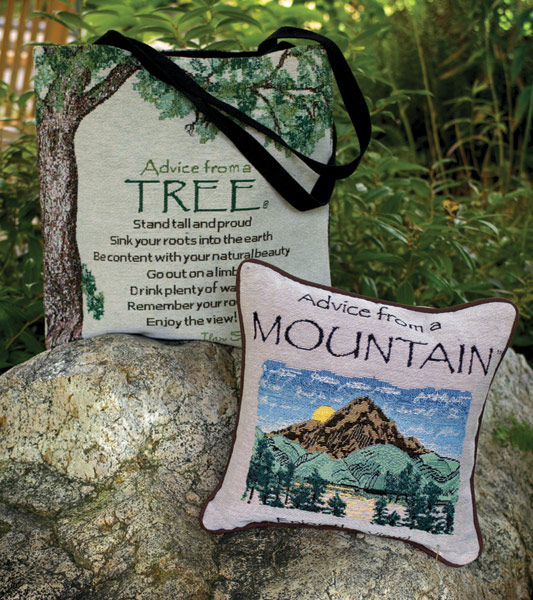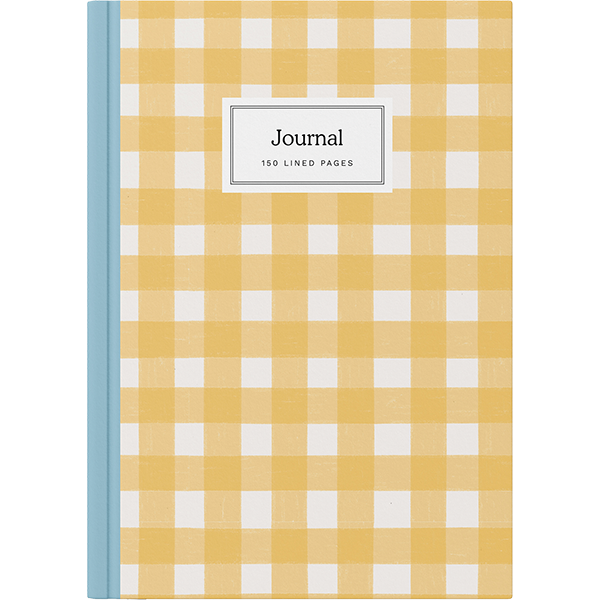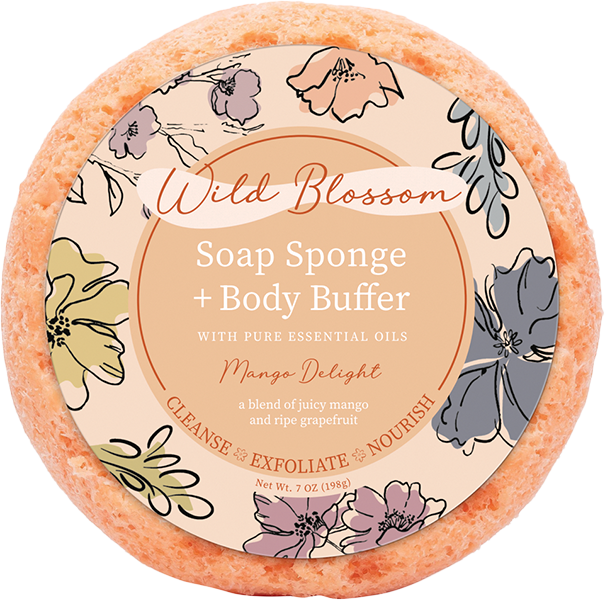Textiles Trends
Adapting to changes
Despite the recession, textiles have proven to be a strong sales category. Find out how vendors and retailers have adapted their lines and sales strategies to make sure that textiles continue to trend up.
Over the course of the past few months, retailer Shelly Dozier-McKee has seen a shift in the types of textiles her customers are buying. The co-owner of The Scarlet Tassel in Atlanta has noticed that the recession has brought about a consumer shift—there is a greater focus on value and price.
So when it comes to gift purchases, Dozier-McKee reports that guest and dish towels, because of their lower price points, are doing well. Even if they could be considered as more of a luxury item, throw blankets are also selling well. “People might see the blanket as a necessity these days, using it as a way to keep warm without turning up the heat,” Dozier-McKee explains.
Like much of the retail industry, the textile market has struggled to do well in a down economy. However, textiles have an advantage that some other retail markets might not.
Jimmy Fang, executive vice president of C & F Enterprises in Newport News, VA, points out that while textiles might not be a consumer staple, it’s still something that people need to buy. “Textiles have continued to be a strong performer in the marketplace,” he adds.
 This might partly be due to the fact that textile vendors have been quick to adapt to the changing needs of the marketplace. They have introduced new lines tailored specifically toward these new buying trends or extended lines to help business stay strong.
This might partly be due to the fact that textile vendors have been quick to adapt to the changing needs of the marketplace. They have introduced new lines tailored specifically toward these new buying trends or extended lines to help business stay strong.
Wholesaler Manual Woodworkers and Weavers of Hendersonville, NC, is a perfect case in point. Manual’s textile business features jacquard woven tapestries that include throws, wall decors, pillows, table linens, and rugs. Doug Adolphson, director of the company’s gift division, speculates that slow home sales have led to a decline in purchases of many home décor products. “People don’t seem to be buying as much decorative items for the house but instead are buying gift items,” he says. In keeping with this trend, the company has been manufacturing smaller items that are better suited for gift purchases. Adolphson adds that while the company stays abreast of design and consumer trends, it doesn’t “lose sight of the core products that continue to generate sales.”
Lynn Switanowski-Barrett of Boston-based Creative Business Consulting Group says that wholesalers are extending their lines by dabbling in new market segments. “For example, companies in home décor who are doing curtains and quilt fabrics are adding fabrics for handbags into the mix,” she says.
Pulse on Fashion
 Adolphson points to other industry factors that dictate trends in textiles. One that particularly stands out is fashion. What’s on the fashion runway immediately makes its way into giftware. While this trend has held true for many product categories, it has especially been the case for textiles.
Adolphson points to other industry factors that dictate trends in textiles. One that particularly stands out is fashion. What’s on the fashion runway immediately makes its way into giftware. While this trend has held true for many product categories, it has especially been the case for textiles.
Derrick Lo, gift manager for Peking Handicraft, Inc., agrees.
The general market for textiles is becoming more trend and fashion related,” he explains. As the retail landscape becomes more competitive, textile vendors find it’s important to work closely with designers to make sure they are focusing on the latest trends, styles, and colors. “That way,” Lo adds, “we can present the best and brightest collections at competitive prices.”
Peking Handicraft’s most popular products come from a variety of categories, Lo says. The San Francisco-based company wholesales products from designers like Anna Maria, Trina Turk, Julia Junkin and more.
Design darlings
There are some designs that are perennial favorites. Take “coastal” for example. Retailer Sylvia Killion has found her calling in products with a nautical theme. The owner of Sylvia’s By the Sea in Scituate, MA, stocks products from Donna Elle.
Donna Elle, a wholesaler based in Nantucket, MA, designs and sells a collection of rugs, curtains, hardware shaped like seashells, bedding, linens and pillows. Elle believes that design and color trends are a vital part of her product line’s selling point.
Textile expert Jimmy Fang says that in some markets, particularly the Southeast, large floral designs remain popular. “We’re also seeing coastal-themed items do well, as are items for outdoor entertaining,” he adds.
As important as these are, for a product to do well, functionality and ease of maintenance need to be there too, Elle says.
Fang agrees. While colors, fabrics, and designs are always evolving, functionality and value are two textile trends that never go out of style, he says. “Some of the best fabrics for outdoors include acrylics and spun polyester because they are easy to clean and stand up to weather,” Fang adds.
Niche market
 Developing a wide array of products has been somewhat of a trend in the textile industry. However, Textillery Weavers is one company that has successfully bucked this trend.
Developing a wide array of products has been somewhat of a trend in the textile industry. However, Textillery Weavers is one company that has successfully bucked this trend.
“We sell only one item to gift store—throw blankets,” says owner Judith Rose. “What we’re best known for is the variety and the number of colors we offer.”
Rose likens her throws, which are hand-woven in Indiana, to adult security blankets. “It’s a very personal item, especially as people are staying home more and want to be able to curl up with something warm and comforting.”
She admits that her product is difficult to display in stores, mainly because there are so many colors to choose from that a few throws on display don’t show the full range of shades that are available.
Display challenge
Rose is not the only one with this challenge, however. Displaying textile products effectively can present a challenge to most stores. After all, textiles can require a lot of space to provide the best presentation of a product.
“Space is always an issue,” says Jimmy Fang. “Sometimes you have to be creative in how you arrive at a display that compromises the amount of space taken versus what you need to convey to the buyer. I think for large space takers, the key is going vertical. Figuring out how to stack and display multiple, complementary products together is always a plus.”
Making the products desirable so customers can imagine themselves in the setting is one strategy stores can use to best market textile merchandise, according to Ann Gish. Gish’s product line includes a wide range of luxury bedding, decorative pillows, and tabletop accessories, as well as jewelry pouches and sachets.
Lynn Switanowski-Barrett agrees. “The key is to make merchandising interesting,” she says. The display should fit with the décor of the store. Plover Organic relies on its product packaging to help sell itself. “Our packaging does look great on the shelves and our prints are colorful and eye catching,” says Sheila Mulvihill, owner. “We also have fabric swatch books that can be displayed so the shoppers can see all of our prints as well as photos of our bedding on beds. I think that helps visually to see what a room would look like dressed in Plover bedding,” she adds.
Tried and tested
 Cross selling is a sales strategy that has worked well for gift stores. Donna Elle encourages retailers to demonstrate to customers how buying even one or two pieces can create the theme they are looking for. “For example, you can take my pieces and add them to an already existing theme or [purchase] a shower curtain or throw rug as a single item to add color and [novelty] to a space. In other words, [customers] don’t have to buy multiple items to achieve the coastal feel,” she reminds retailers. At a time when customers are wary about shelling out huge amounts of money, this strategy is especially important.
Cross selling is a sales strategy that has worked well for gift stores. Donna Elle encourages retailers to demonstrate to customers how buying even one or two pieces can create the theme they are looking for. “For example, you can take my pieces and add them to an already existing theme or [purchase] a shower curtain or throw rug as a single item to add color and [novelty] to a space. In other words, [customers] don’t have to buy multiple items to achieve the coastal feel,” she reminds retailers. At a time when customers are wary about shelling out huge amounts of money, this strategy is especially important.
Even for the smallest gift stores, merchandising small vignettes either by a featured designer or special theme or trend-related color story is a very effective sales strategy, says Derrick Lo of Peking.
The Scarlet Tassel follows this advice. The store is specifically segmented to enhance displays of the merchandise. Dozier-McKee uses racks to display dishtowels and a linen cabinet to display throws. A special wall display was built specifically for pillows.
Meanwhile, at Sylvia’s By the Sea, rugs, pillows, and blankets are a big part of the front of the store, says Sylvia Killion. “Display is everything, but rugs can be particularly tricky. You can’t put them on the floor because they will get ruined. So we spread out as many as we can in our huge front windows and the rest we display on tables or rolled up. We continually rotate the rugs from windows to tables so that the store looks new and refreshing,” Killion says.
Overall, the general consensus is that the outlook for the textile industry looks good. “In general the market seems to be slowly pulling out of its doldrums,” Lo adds, “but customers still are cost conscious and really seek out the best collections with the best price points.”
The bottom line, Fang adds, is that “you have to have product to move product. We are seeing the retailers that always have fresh product and adapt to trends and seasons continue to be strong.”
Mouse over images below to view.



































